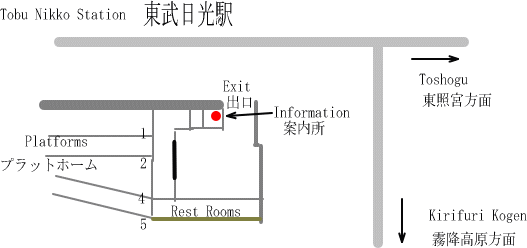|
A Pleasant Trail Walk with Spectacular Views
|
|||||||
|
May is a good season to see plants sprouting, putting forth leaf and flower buds, and attracting pollinators with colorful flowers to which they have devoted all their energy. This hike focuses on the ecosystem in Senjo-ga-hara moor that extends at the foot of Mount Nantai and provides you with an opportunity of interacting with the natural environment
|
|||||||
|
Senjo-ga-hara covers an area of about
650,000 m2 at an altitude of 1,400 m (4,000 ft.) at the foot of Mt. Nantai (2484m
above sea level), an old volcano which first erupted about 23,000 years
ago and was active until 7,000-8,000 years ago. By lava flows from the
volcano, the Yugawa river was dammed to form a lake, which has gradually
dried due to sediment and soil accumulated in it. Much of Senjo-ga-hara
appears to be a grassland now with small ponds and creeks. Shrubs and trees
are migrating into the area and transforming it into woodland. You will
find tree species representative of cool temperate forest, such as birch,
beech, maple, tsuga, and larch. There are a few other volcanoes in this
area, of which Mt. Shirane has a recent record of volcanic activity, an
eruption in 1649. |
|
1. Schedule |
not definite for 2010. |
|||||||
|
2. Where and What Time |
How to get there from Tokyo: see the information below.
|
|||||||
|
3. Itinerary |
Lv. Nikko station (Tobu bus ) 9: 40- Arr. Ryuzunotaki
falls 10: 41
. |
|||||||
|
4. What to Bring |
You will walk at about 1,400 m above sea level where temperatures are always lower than in Tokyo and weather is unpredictable. We suggest you bring warm jacket, rain gear and a hat. You should wear comfortable walking shoes with firm soles. You may want to bring snacks and drinks. |
|||||||
|
8. Notes |
Getting There from Central Tokyo: With Japan Rail Pass
|
|||||||
| Back to the top of the page | ||||||||

